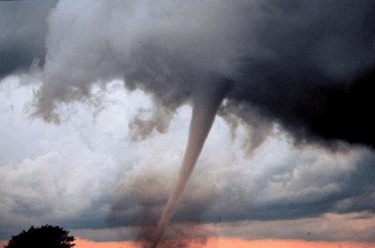First Numerical Polarimetric Radar Simulator Helps Meteorologists Analyze Tornado Debris
By Jof Enriquez,
Follow me on Twitter @jofenriq

Researchers at the University of Oklahoma's (OU) Advanced Radar Research Center have developed the first numerical polarimetric radar emulator to study and characterize scattering mechanisms of debris particles in tornadoes.
Debris particles like leaves, shingles, and boards, swirling in and around tornadoes, have different characteristics, such as lofting and centrifuging, which translate to distinct signal signatures captured by radar. Orientation of debris also makes a difference in how it scatters and falls through the atmosphere — an important thing to note, since flying debris causes most fatalities during a tornado strike.
All the debris scattering data can be run and analyzed via simulations at the Radar Innovations Laboratory on the OU Research Campus, something current polarimetric radars – which can only estimate amounts of rain or snow – find difficult to process.
"What we did is to simulate exactly what raindrops would do in a tornadic storm, and debris, and how they would interact with each other," said Robert Palmer, director of the university's Advanced Radar Research Center, in a video explaining the SimRadar program.
"With debris, we had to describe the electromagnetic properties from every angle, and then the drag behavior from every angle," added OU research scientist and study lead author Boon Leng Cheng, "so that is something that's new with this simulator compared to the others."
In building the emulator, the researchers primarily wanted to verify hypotheses among metereologists suggesting that common debris alignment and/or dominant scattering from objects with high radar-cross-section (RCS) values cause negative ZDR (differential reflectivity), which has been observed near tornadoes, but is yet to be explained physically. Further, this phenomenon is difficult to measure directly from the dangerous immediate vicinity of tornadoes.
Besides exploring radar observations near tornadoes, the research findings do have immediate real-life applications, particularly in weather forecasting and emergency response.
"With this simulator, we can explain in great detail to the operational weather community [weather forecasters] the tornadic echo from polarimetric radar," said Palmer in a news release. "The knowledge gained from this study will improve tornado detection and near real-time damage estimates."
This research, the results of which are published in the IEEE journal Transactions on Geoscience and Remote Sensing, was funded by the National Science Foundation's (NSF) Division of Atmospheric and Geospace Sciences.
